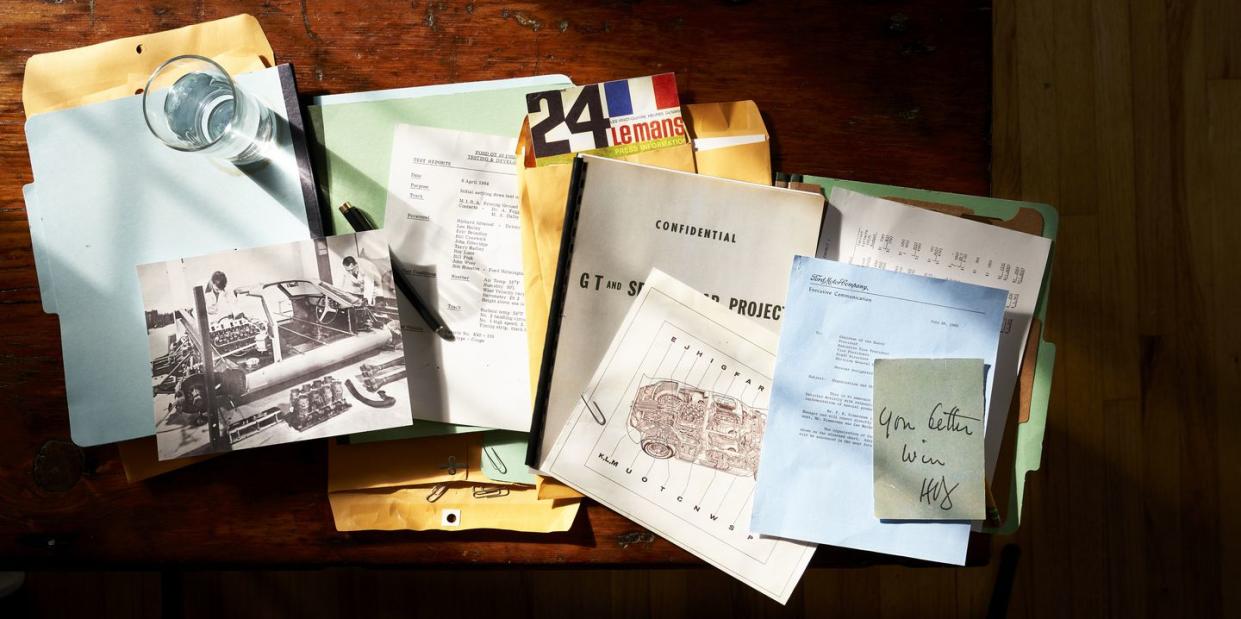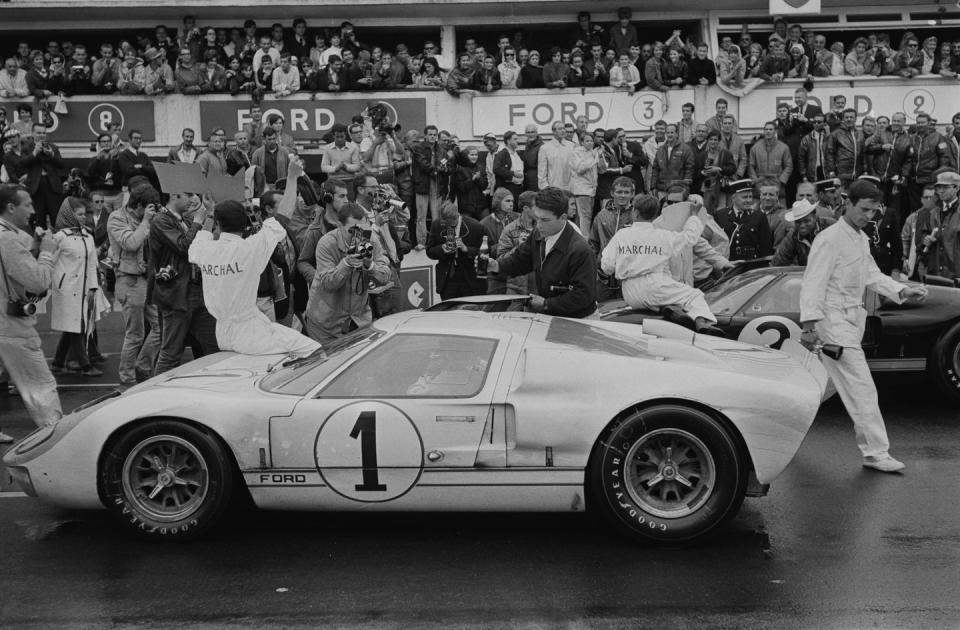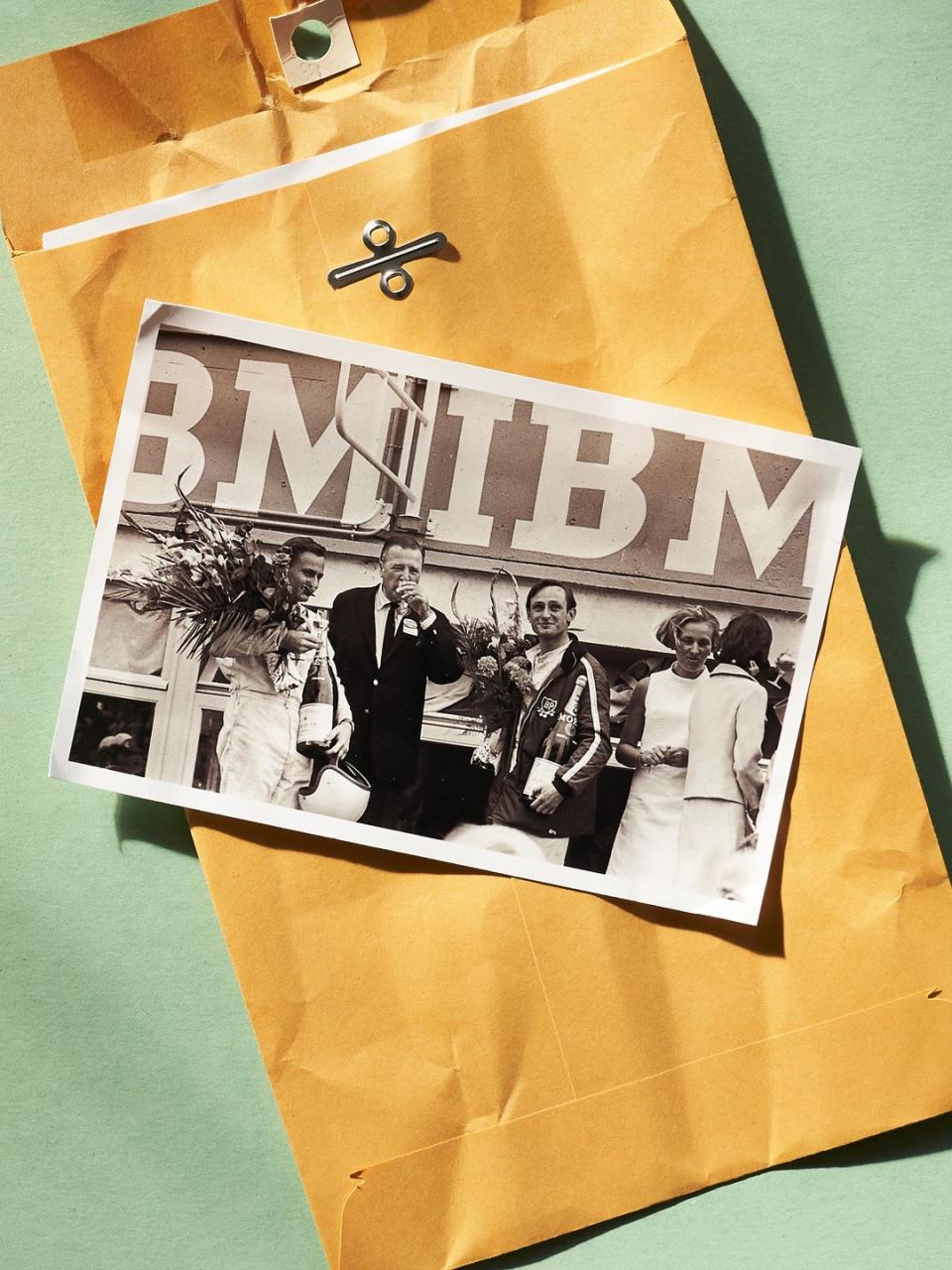We Raided Ford's Archives for an Inside Look at its Le Mans Triumph

- Oops!Something went wrong.Please try again later.
- Oops!Something went wrong.Please try again later.
Of all the historic events in motor racing, none trumps the moment three Ford GT40s took the checkered flag together at Le Mans on June 19, 1966. Arguably, of course. The story has been told often—in books, articles, and in 2019’s Disney feature Ford v Ferrari. It was the first time an American manufacturer won the most important sports-car race in the world. And it made timeless heroes of Ken Miles, Bruce McLaren, and Carroll Shelby. So what new could we bring to the table now?
This story originally appeared in Volume 3 of Road & Track.

We raided Ford’s archives, where we found rare and, in many cases, highly confidential (at the time) documents that tell the story of Ford’s victory at Le Mans. Some of these items have never been published before. The staggering amount of money and coordination it took for Ford to build its first-ever custom sports racing car, the incredible power that Henry Ford II wielded at the height of the Mad Men Sixties—all of it is captured in these eight pieces of paper. Here’s a look at Ford’s 1966 Le Mans victory as you’ve never seen it before.
SIGN UP FOR THE TRACK CLUB BY R&T FOR MORE EXCLUSIVE STORIES
1. In June 1963, a confidential booklet circulated through high-level offices at Ford. It was entitled “GT and SPORTS CAR PROJECT: Program and Package Book Issue 1.” The point of it all was spelled out clearly in the introduction: “To generate in the public’s mind a desire to own a Ford product.” The first project of this new program would be “a racing GT car that will have the potential to compete successfully in major road races such as Sebring and LeMans [sic].” On the face of it, this booklet was normal corporate “Hey, here’s a new idea” correspondence. In history’s eye, it launched an extraordinary chapter in sports history, car history, and American history. Over dozens of pages, the booklet went on to detail the first build plan for what would become the Ford GT40 racing car. It called for a 350-hp, 289-cubic inch V-8 to be mounted mid-rear. There were plans for suspension, fuel and exhaust systems, wheels, and tires, as well as specifications for length, width, height, weight, and wheelbase. A chart showing horsepower, rolling resistance, and aerodynamic drag suggested a top speed of about 215 mph—which proved accurate once the GT40 was built.
2. Internally at Ford in the early 1960s, a “Blue Paper” was a confidential document that signaled to whomever received it to stop what they were doing and read this now! This one, dated July 26, 1963, signed by Lee Iacocca, Ford Division chief at the time, established a new “Special Vehicles Activity” team that would be in charge of “special product programs” from an executive level. Among those programs would be the campaign to beat Ferrari at Le Mans.
3. The build of the first GT40s required a massive effort of design and coordination. For the first year of competition in 1964, former Aston Martin racing chief John Wyer headed up the Le Mans team. His J.W. Automotive Engineering Limited created a “Ford GT40: Illustrated Parts List.” The book-length study showed this diagram on page one. Each letter seen in this cutaway corresponded to more detailed diagrams further on, so every part of the new, custom-built GT40 was documented, down to each nut and bolt

4. The first tests of Ford’s Le Mans car occurred in April 1964. Each test was documented in detailed memos. This one, dated April 8, followed a test at the Motor Industry Research Association proving ground in England, with Briton Richard Attwood at the wheel. GT40 nerds will recognize some exciting names listed as personnel on hand, including Eric Broadley (founder of Lola) and Ford engineer Roy Lunn (played by actor JJ Feild in Ford v Ferrari).
5. At the beginning of the Sixties, Ford had no racing program, no Mustang... some might say, no guts. Five years later, the company was battling it out in sports cars, NASCAR, and IndyCar. Fueled by that excitement, the all-new Mustang became the most successful new-car launch in history. Meanwhile, Carroll Shelby had taken over Ford’s Le Mans team. Company operatives put together booklets detailing the efforts to keep top executives in the loop on all the racing fronts. This photo of engineers putting together a GT40 comes from one of those booklets—Lee Iacocca’s personal copy, in fact.

6. It was common knowledge that Henry Ford II was willing to spend anything to beat Enzo Ferrari. The actual amounts, however, were guarded like palace secrets. This document—“Revised Budget Proposal”—breaks down the major costs of the program for the 24 Hours of Daytona, the 12 Hours of Sebring, and Le Mans in 1966. Ten GT40 chassis: estimated $450,000. Sixty 427 engines: estimated $185,000. Driver contracts: estimated $130,000. As Carroll Shelby personally told me, years ago: “You wouldn’t believe what happens when a man like [Henry Ford II] turns on the faucet.”
7. Le Mans in 1966 was historic for many reasons, including its impact on media. The Ford vs. Ferrari rivalry ushered in the era of global televised racing. And the race was covered internationally across acres of newspaper copy, more than any other motor race to date by far. This shot shows the cover of a press kit given out to newspaper, magazine, and TV reporters.
8. Before Le Mans in 1966, with the climactic battle between Ford and Ferrari at hand, Henry Ford II gave handwritten notes to Carroll Shelby and Leo Beebe—his most faithful corporate employee, who was personally overseeing the effort for him. The scribbled note simply reads: “You better win, HF II.” Henry himself was the honorary race steward that year, and he dropped the flag to start the 24-hour war. What happened next? We don’t want to give away the ending.
SIGN UP FOR THE TRACK CLUB BY R&T FOR MORE EXCLUSIVE STORIES
You Might Also Like

